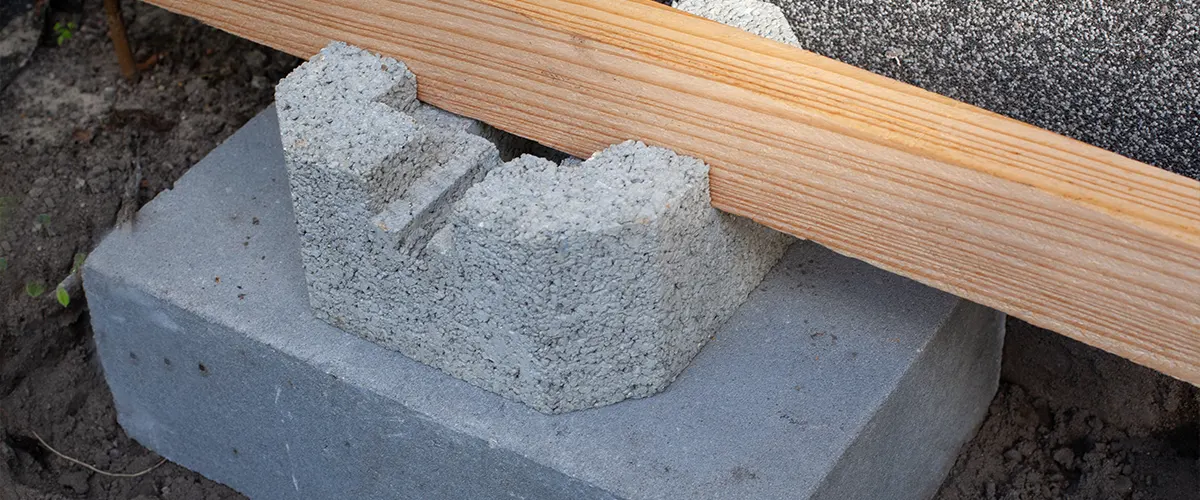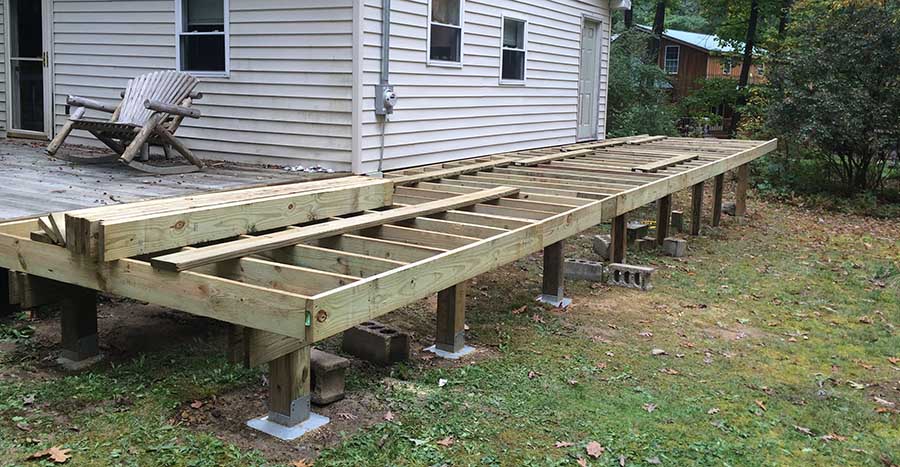Selecting the Right Deck Footings for Stability and Longevity
When it concerns building a deck, among one of the most essential choices you will make is choosing the best grounds for security and sturdiness. The longevity and security of your deck depend greatly on the sort of grounds you pick, as they offer the important support and security to endure the examination of time. With a myriad of alternatives available, it can be frustrating to determine which grounds are best suited for your details requirements. In this conversation, we will explore the various kinds of deck footings, think about the important aspects to weigh when choosing, and explore the pros and cons of various choices. By the end, you will certainly have a more clear understanding of the options handy and be much better outfitted to make a notified choice for your deck task.
Sorts Of Deck Footings
These grounds are composed of a round hole filled up with concrete, which provides a solid foundation for the deck blog posts. Concrete pier footings are fairly easy to set up and use excellent security, making them a prominent option for lots of deck projects.
One more kind of footing is the helical stack footing. Helical piles are steel shafts with helical plates affixed to them. These footings are mounted by screwing them right into the ground, which creates a secure foundation for the deck. Helical heap footings are excellent for locations with tough soil problems, as they can be installed in almost any kind of kind of soil. They additionally enable very easy modification and leveling of the deck if needed.
Alternatively, some building contractors go with precast concrete footings. These footings are made of resilient concrete and come in different shapes and sizes to fit various deck designs. Precast concrete footings are practical to set up and offer a steady base for the deck structure.
Finally, another choice is the post-in-anchor ground system. This kind of ground includes driving a metal support right into the ground and connecting it to the deck message. It offers flexibility in terms of placing the deck articles and appropriates for decks with lightweight frameworks.
When choosing the ideal type of deck ground, it is necessary to consider aspects such as dirt conditions, deck lots, and regional building ordinance (Deck Footings). Consulting with a professional contractor or structural designer can help ensure the suitable ground is picked for a stable and risk-free deck
Factors to Consider When Selecting Footings
When choosing the suitable footings for a deck, it is crucial to meticulously consider numerous elements such as soil conditions, deck tons, and adherence to local building regulations. These aspects play a considerable duty in making certain the security and resilience of the deck structure.
One of the primary variables to take into consideration is the dirt problems. The kind of dirt on which the deck will be built figures out the kind of grounds needed. For example, decks improved loose or sandy dirts may require deeper footings to offer sufficient assistance and protect against settling. On the other hand, decks improved clay or extensive dirts might need grounds that can suit the dirt's tendency to expand and agreement.
Another important aspect is the deck lots. The weight of the deck, including the products made use of and any kind of potential real-time tons such as furnishings or celebrations, have to be taken right into account when selecting grounds. The footings should be created to bear the weight of the deck and disperse it uniformly to avoid any kind of structural concerns or failures.
Lastly, adherence to regional building regulations is critical. Building regulations vary from area to region, and it is important to follow the particular demands established by the local authorities. Deck Footings. These codes make sure that the deck is developed securely and meets the essential requirements for architectural stability and load-bearing ability
Concrete Footings: Cons and pros

Concrete footings offer several advantages and downsides when utilized as the structure for a deck. On the positive side, concrete footings offer superb security and toughness.
An additional benefit of concrete footings is their flexibility. They can be put right into various shapes and sizes to accommodate various deck styles and arrangements. you can look here Concrete grounds can be personalized to fit the certain requirements and demands of the deck structure.
Nonetheless, there are additionally some downsides to utilizing concrete footings. One major negative aspect is the price and labor associated with their installment. Concrete footings require excavation and frequently need the aid of hefty equipment. This can enhance the overall price of the deck job and may call for specialist help.

Helical Piers Vs. Sonotubes: Which Is Better?
In considering the structure choices for a deck, the comparison between helical piers and sonotubes is vital in identifying the remarkable option. They are twisted right into the ground utilizing hydraulic machinery, giving a secure and sturdy foundation for the deck.
When it involves security and sturdiness, helical piers have the upper hand. The helical plates on the piers create a solid hold with the dirt, moving or avoiding any kind of motion of the deck. This is especially valuable in areas with unstable or changing soil problems. Sonotubes, on the other hand, count exclusively on the concrete filling for security, which may not offer the exact same level of stamina and resistance.
In regards to installation, helical piers are reasonably much easier and faster to install compared to sonotubes. The hydraulic equipment used to twist the piers right into the ground ensures a efficient and quick procedure. Sonotubes, on the various other hand, require excavating openings and pouring concrete, which can be taxing and labor-intensive.
Additionally, helical piers are an even more functional option. They can be utilized in numerous soil conditions and can be changed or enhanced if needed. Sonotubes, on go to my blog the various other hand, may require extra assistance, such as rebar, in particular dirt problems or areas with high load demands.
Picking the Right Footings for Your Deck's Dimensions
For optimum structural integrity, it is crucial to carefully choose the ideal grounds that straighten with the measurements of your deck. The measurements of your deck, including its height, length, and width, play a substantial role in figuring out the kind and dimension of footings needed.
When choosing grounds for your deck, it is very important to consider the load-bearing capability of the dirt. The weight of the deck, combined with the weight of any furnishings or individuals on it, applies a substantial pressure on the grounds (Deck Footings). It is important to choose grounds that can appropriately sustain this weight without moving or sinking over time.
The size and shape of the grounds must also be considered. Larger decks with better dimensions require bigger footings to provide enough security and support. The form of the footings, whether they are square or rounded, depends on the design and format of the deck. In addition, the depth at which the grounds are set up should be established based on the frost line in your area to prevent any kind of heaving or moving as a result of freezing temperatures.
Conclusion
In conclusion, choosing the best deck footings is vital for ensuring stability and toughness. Factors such as the type of footings, the deck's dimensions, and the pros and cons of different choices should be thought about.
These grounds are composed of a round opening loaded with concrete, which gives a strong foundation for the deck articles. Concrete pier footings are fairly simple to set up and look here use superb stability, making them a prominent option for lots of deck jobs.
Precast concrete grounds are practical to set up and give a stable base for the deck structure.
It offers flexibility in terms of positioning the deck posts and is suitable for decks with light-weight frameworks.
Concrete footings supply numerous benefits and disadvantages when made use of as the structure for a deck.
Comments on “Engineered for Success: The Science Behind Robust and Resilient Deck Footings”